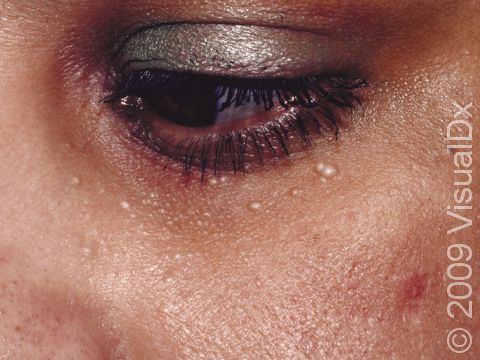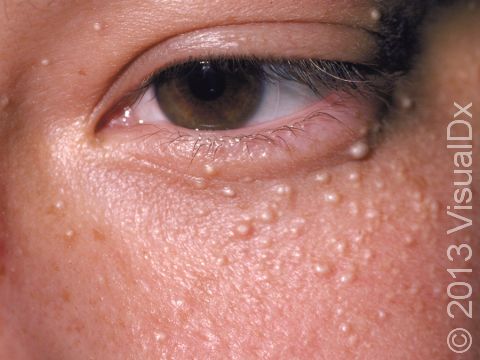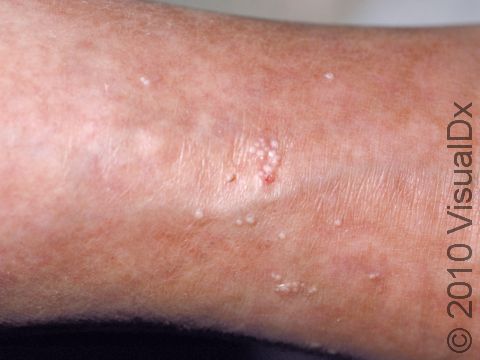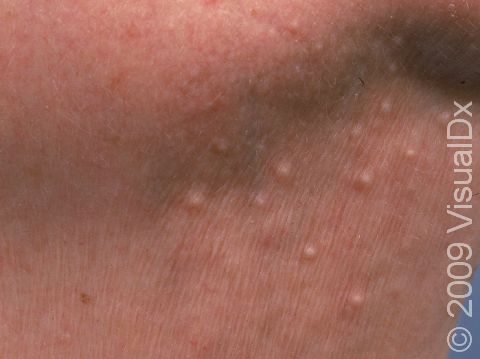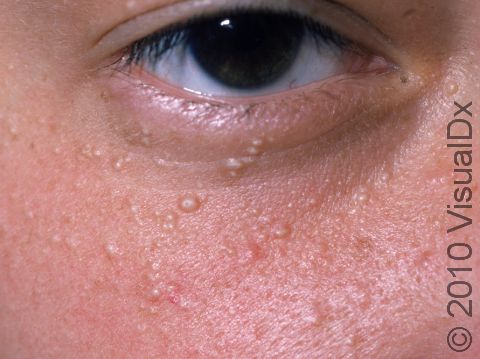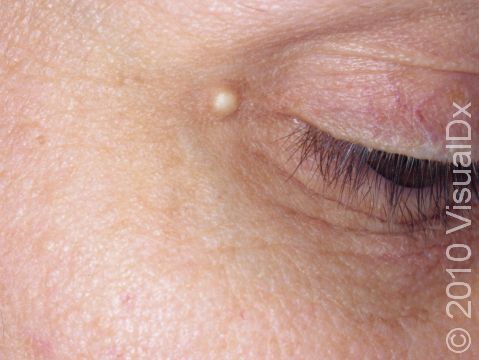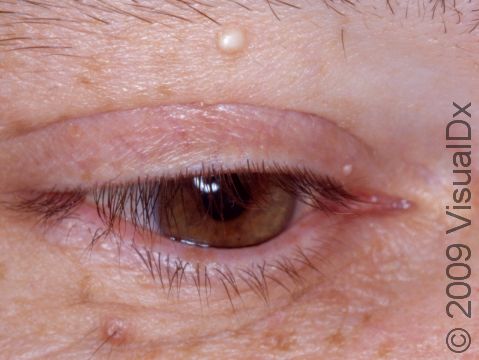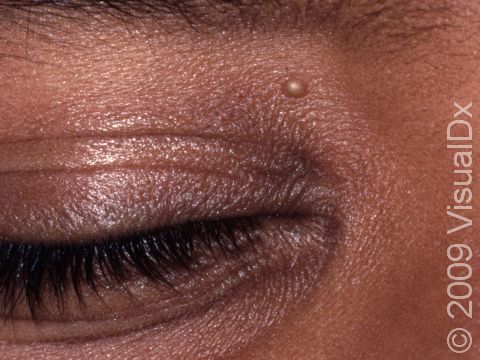Milia
Milia are commonly found on the skin of people of all ages. They are formed when keratin (a substance produced by the skin) becomes entrapped beneath the outer layer of the skin, forming a tiny cyst. An individual milium (the singular of milia) is formed at the base of a hair follicle or sweat gland.
Milia can be categorized as either primary or secondary. Primary milia are formed directly from entrapped keratin and are usually found on the faces of infants and adults. Secondary milia are also tiny cysts and look similar, but these develop after something clogs the ducts leading to the skin surface, such as after an injury, burn, or blistering of the skin.
Who's At Risk?
Milia can occur in people of all ages, of any ethnicity, and of either sex. Milia are so common in newborn babies (occurring in up to 50% of them) that they are considered normal.
Secondary milia may appear in affected skin of people with the following:
- Blistering skin conditions, such as bullous pemphigoid, epidermolysis bullosa, and porphyria cutanea tarda
- Burns
- Blistering injury to skin, such as poison ivy
- Following skin resurfacing procedures such as dermabrasion or laser resurfacing
- Following long-term use of steroid creams
- Chronic sun damage
Signs & Symptoms
Milia appear as 1–2 mm white-to-yellow, dome-shaped bumps that are not painful or itchy.
The most common locations for primary milia include:
- Around the eyes, cheeks, nose, and forehead in adults and infants
- On the gums and palate inside the mouth of infants; these milia are called Epstein’s pearls, and they occur in up to 85% of infants
The most common locations for secondary milia include:
- Anywhere on the body where another skin condition exists, particularly on the backs of the hands
- On the faces of people who have had a lot of damage from sun exposure
Self-Care Guidelines
Primary milia found in infants tend to heal on their own within several weeks, though the primary milia found in adults tend to be long lasting.
Although milia are found in the outer layers of skin, they are difficult to remove without the proper tools. Do not try to remove them at home, as you may leave a scar.
Treatments
If the diagnosis from the doctor is primary milia in an infant, no treatment is necessary, as the bumps will go away on their own within a few weeks.
Primary or secondary milia in an adult may disappear on their own, but your doctor may treat you with one of the following:
- Piercing each milium with a sterile lancet or scalpel followed by removal of the cyst material with a tool called a comedone extractor
- Topical retinoid cream such as tretinoin, tazarotene, or adapalene
- A series of acid peels or microdermabrasion procedures at the dermatologist’s office
Visit Urgency
See a dermatologist or your general physician for evaluation if you notice any new bumps on the skin.
References
nia, Jean L., ed. Dermatology, pp.1722-1723. New York: Mosby, 2003.
Freedberg, Irwin M., ed. Fitzpatrick’s Dermatology in General Medicine. 6th ed. pp.601, 604, 780. New York: McGraw-Hill, 2003.
Morelli JG, Burch JM. Skin. Hay WW Jr, Levin MJ, Sondheimer JM, Deterding RR, eds. Current Diagnosis & Treatment: Pediatrics, 19th ed. New York, NY: McGraw-Hill Medical; 2008:
Last modified on October 10th, 2022 at 4:19 pm

Not sure what to look for?
Try our new Rash and Skin Condition Finder
